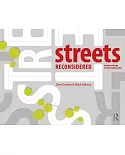With admirable clarity, they describe the policy debate from its beginning, review the economic theory, trace the evolution of development regulation, and summarize the major research
on the topic. In addition, they offer their own research, accompanied by a case study of two strikingly different Washington, D.C., suburbs. They also include results of focus groups
conducted in Dallas, Denver, and Tucson. The authors find that environmental regulatory costs—as a share of total costs and processes—are about the same now as they were thirty years
ago, even though there are far more regulations today. They find, too, that environmental regulations may actually create benefits that could improve the value of housing.
Although they conclude that regulations do not appear to drive up housing costs more now than in the past, they do offer recommendations of ways in which the processes associated
with regulations—including review procedures—could be improved and could result in cost savings. Intended primarily for professionals who are involved in, or impacted by,
regulations—from public officials, planners, and engineers to housing developers and community activists—this book will provide useful insights and data to anyone who wants to know
if (and how) American housing can actually be made “affordable.”





















